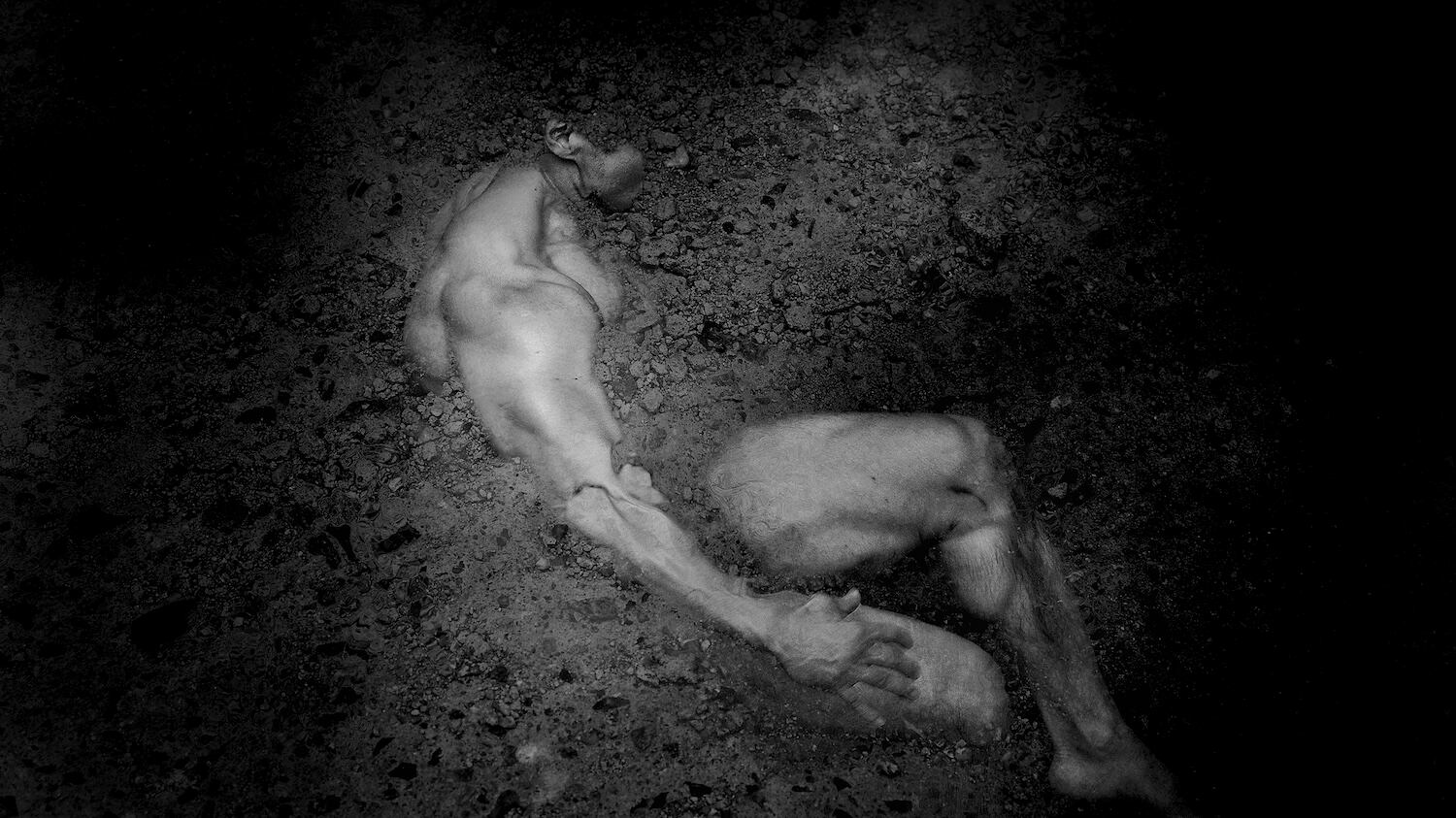Some of the most successful art uses one of our senses to stimulate the others. It’s not just how making a profound connection with art can light up the goosebumps—it’s that near-indefinable quality of a work that can make viewers want to taste a sculpture, smell a live performance, or drag their eyeballs across an image’s texture.
Photographers Eli Craven and Dongwook Lee challenge what images can be with Touching and Wozu, their respective shows in Blue Sky Gallery, Oregon Center for Photographic Arts’ largest exhibition halls. Through the rest of August, Blue Sky visitors can see how each photographer uses black-and-white images of bodies to estrange the familiar, with contrasting and occasionally complementary effect. Craven makes Touching’s images into modified sculptures, and while Lee’s images are traditionally dimensioned, his use of water in Wozu renders the body into anonymous forms of classically posed alien beauty, and unshakable dread.
Visitors are shown Touching first, and find Wozu down the back of Blue Sky’s hall, where they can also view a member gallery space. Touching uses materials like wood panels and soft pink matte finishes to largely obscure a photo’s human subject, but also creates a mystery with cut-out peepholes for the image to peek out from behind. When the holes line up with a subject’s eye, as it does in pieces like Side Eye or the Condolence duo set, it’s as if Craven cut out an interdimensional rift that lets the people in the image and the viewer connect across time and space. The art can stare back—or, when Craven covers eyes as happens when one man’s eye is covered by a cutout on another in the print Beholden (Flex), their obscurity cultivates mystery.
Likewise, gold-hue mirror panels installed on pieces like Mouth to Mouth and Venous Flow create prismatic Rorschach ink blots from their fixed vantage points, requiring active participation from the viewer to see them. If one were to somehow ignore their responses to the Touching Hands series of hi-res hand photos printed on hand towels, then some of the most striking pieces in Touching are the eye windows built into Eye Water #1 and Beholden (Mend). The way fingers line up with the respective pink and brown blocks make the image seem as if it is in the midst of shutting itself off from the audience.
Whereas the grayscale in Touching feels like reclaimed midcentury collage photos, Lee’s Wozu—the German “for what,” driving closer to finding purpose than the broader warum—are plainly of this millennium, but employing Renaissance body language in death parables. Wozu spans more than a decade of haunting photos first inspired by Lee’s reflection in water. Lee ponders water’s duality as a tranquil yet undeniably violent force: human attributes that will never humanize the element.
Wozu’s human bodies are in conflict with bodies of water. Most of the show resembles a fever dream about nude bygone bodybuilders like Mickey Hargitay waging a cinematic battle against a shredded da Vinci Jesus and his swole disciples. You’re welcome to insert your own touchpoints, since faces are never shown. Water is rarely depicted outright, but represents the distortions in melting physiques. Water appears most aqueous in Wozu 19, as a large spherical droplet reflecting, or containing, most of two men. Wozu 20 shows two men with sculpted backs and buttocks approaching a third man on all fours, but the way Lee positions his subjects makes the shot feel less like a Tom of Finland fantasy and more like a John Carpenter one.
Music fans might think that Wozu resembles the cover art Jamie Nelson shot for Megan Thee Stallion’s 2022 album Traumazine. While Nelson’s portraits channel a similarly messy emotional wavelength, that series is plainly long exposure. Lee looks as if he took his camera into his nightmares for Wozu with no Adobe subscription. Some of his shots are instantly claustrophobic, like the man merged with rubble in Wozu 09, or the sea of hands reaching up at the camera in Wozu 16. Is it a mosh pit, is it the generational sea of all who have loved you, or is it a still from Drag Me to Hell? Wozu 03 and Wozu 11 look respectively like high-art interpretations of the Corpse Tree from Zack Snyder’s 300, and Gerard Butler’s high-flying, slo-mo choreography throughout that film.
The shows aren’t technically perfect. Touching has rippling from uneven application on some pieces, while some of the Wozu prints appear not to have been properly calibrated, resulting in visible pixelation on close inspection. But these minor faults are no real distraction from the corners of your mind that Craven and Lee can take you. Touching and Wozu are imaginative and somewhat unsettling, in fully the best way possible.
SEE IT: Touching and Wozu at Blue Sky Gallery, Oregon Center for Photographic Arts, 122 NW 8th Ave., 503-225-0210, blueskygallery.org. Noon–5 pm Wednesday–Saturday. Free.

